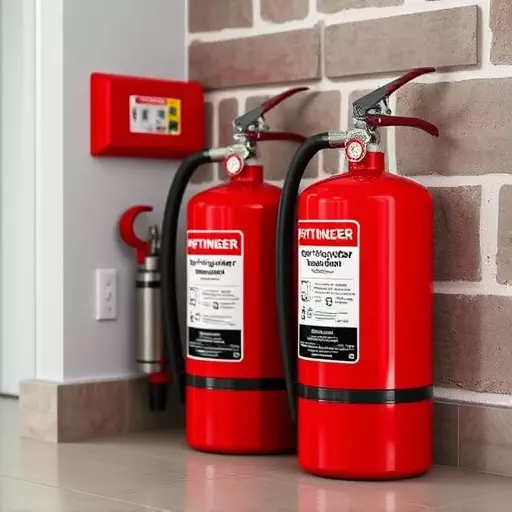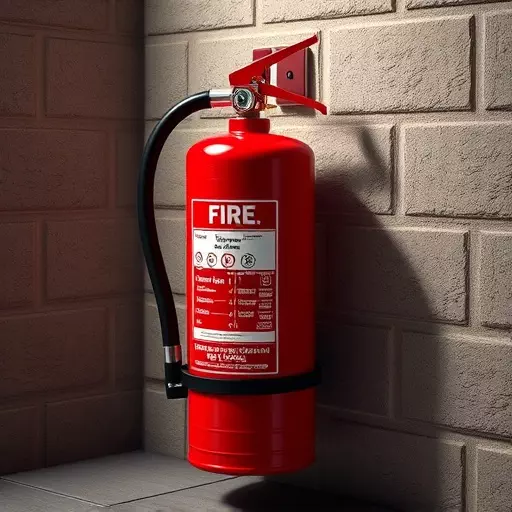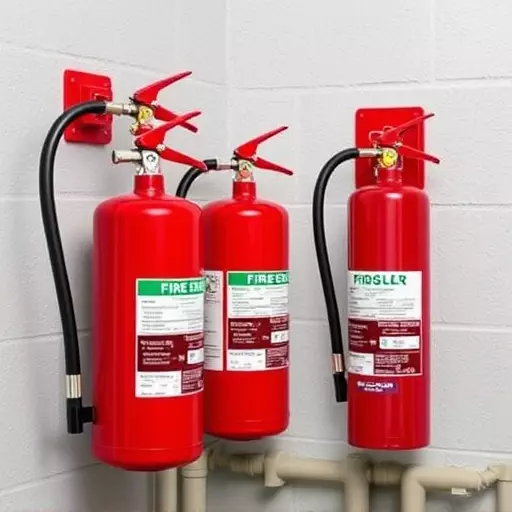Fire extinguishers are essential safety features in kitchens, with distinct requirements for residences and commercial spaces. Local building codes dictate placement and quantity for homes, while commercial kitchens demand sophisticated systems tailored to risks like grease fires, electrical issues, and gas leaks. Professional fire extinguisher installation services ensure compliance, educate users, and maintain equipment for both residential and commercial settings. Regular maintenance, including inspections and testing, is vital for optimal performance, with bi-annual visits recommended. Safety training and proper placement adhere to industry standards and regulations. For tailored solutions, consider specialized services for residential or commercial fire extinguisher installation.
“Fire safety in kitchens is paramount. This comprehensive guide delves into the essential aspects of fire extinguisher installation, tailored for both residential and commercial spaces. Understanding the specific requirements for kitchens, navigating the installation process, and implementing effective maintenance practices are key to ensuring optimal protection. Discover expert tips on choosing the right fire extinguisher, professional installation services, and safety measures that can make all the difference in an emergency. Stay prepared—know your fire extinguisher.”
- Understanding Fire Extinguisher Requirements for Kitchens
- The Process of Residential and Commercial Installation
- Maintenance and Safety Tips for Optimal Protection
Understanding Fire Extinguisher Requirements for Kitchens

Fire extinguishers are a crucial safety measure in any kitchen, whether it’s a residential or commercial space. Understanding the specific requirements for fire extinguisher installation services is essential to mitigate risks effectively. Kitchens present unique challenges due to their high-risk nature, with potential hazards like grease fires, electrical malfunctions, and gas leaks. Therefore, proper placement and type of fire extinguishers are critical.
For residential kitchens, local building codes often dictate the number and location of fire extinguishers. Commercial kitchens face stricter regulations, requiring well-designed fire suppression systems tailored to their specific needs. Professional fire extinguisher installation services can guide property owners or managers through these requirements, ensuring compliance and peace of mind. These experts not only install extinguishers but also educate users on their proper use in case of an emergency.
The Process of Residential and Commercial Installation

The process of installing fire extinguishers differs slightly between residential and commercial settings. For homes, fire extinguisher installation services typically involve assessing the kitchen layout, selecting the appropriate type and size of extinguisher for the space, and strategically placing it within easy reach. Professionals ensure proper mounting on walls or ceilings, connect it to a water source, and test its functionality before finalizing the installation. In contrast, commercial installations demand a more complex approach due to larger kitchens, higher fire risks, and strict safety regulations. Businesses often require multiple extinguishers positioned at specific intervals, along with additional safety features like interlinked alarms and sprinkler systems. Professional fire extinguisher installation services for commercials spaces account for these nuances, guaranteeing comprehensive coverage and adherence to local codes.
Maintenance and Safety Tips for Optimal Protection

Regular maintenance is key to ensuring your fire extinguisher remains operational when it matters most. For residential or commercial properties alike, establishing a routine inspection schedule is vital. This includes visually checking for any signs of damage, corrosion, or leakage, and testing the pressure levels to guarantee proper functioning. Many fire extinguisher installation services recommend bi-annual maintenance visits to keep your equipment in top condition.
Safety shouldn’t be overlooked when it comes to these critical safety devices. Ensure that all staff members (in a commercial setting) or household members (for residential use) are trained on how to operate the extinguisher correctly, and familiarize yourself with the different types available, such as water, carbon dioxide, or dry chemical, each suited for specific fire types. Keep extinguishers easily accessible, unobstructed, and mounted at appropriate heights, following industry standards and local regulations.


